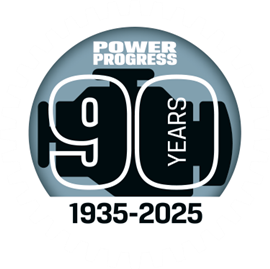Siemens: More Capacity For Additive Manufacturing
17 December 2018

Materials Solutions Ltd., a Siemens’ business, inaugurated a new plant in Worcester, UK, entirely dedicated to additive manufacturing (AM).
Materials Solutions’ General Manager, Phil Hatherley, said that the total investment for the new plant reaches €30 million and will increase the capacity of 3D-printing machines and of post-processing capabilities.
Markus Seibold, vice president Additive Manufacturing Siemens Power & Gas, explained that Materials Solutions was founded in 2006 and acquired by Siemens in 2016 when it joined the other major Siemens hub for AM in Finspång, Sweden. While the latter is mostly dedicated to captive AM for Siemens’ own business and currently employs 15 3D-printing machines (with capacity to increase to 60), Materials Solutions employs 19 printers with capacity now to reach 50, and is oriented also to external customers, mainly in industries such as aerospace, motorsport, tooling, and energy of course. The external customer references are more than 80 and include companies such as Rolls-Royce, Sumitomo, and GKN.
Plans for AM within Siemens, after the addition of the new UK facility, aim at reaching more than 200 different components serialized until 2025, with 200 000 parts printed per year.

Moving forward in its AM strategy, Siemens is also tackling the co-development and industrialization of 3D-printing machines with partners – one example is the new EOS M300-4 for which Materials Solutions is a pilot customer – the implementation of the whole digital chain capabilities, and the automation of the depowdering process after the 3D printing together with Germany-based Solukon Machinenbau GmbH.
The utilization of technologies as for example Digital Twin are enablers for industrial AM. In addition to that, Siemens can count already on one of the largest metal AM printer fleets in the world, along with an extensive material database, especially for the most common nickel-based alloys.
Vladimir Navrotsky, Siemens’ CTO of Power Generation Service, explained the advantages of 3D-printed components over conventionally-manufactured metal parts: “Additive Manufacturing has the great advantage of reducing time-to-market for the components; in terms of product development, AM allows for shorter innovation cycles and research on more complex products.”
We are talking here specifically of DfAM components, that is parts Designed for Additive Manufacturing. One example is the DfAM burner for the Siemens SGT-700 gas turbine that has been introduced for commercial operation in early 2018 and has accumulated more than 8000 operating hours.
“AM increases production flexibility, with the possibility of individualized mass production and higher productivity. At the same time, production quality is greatly improved, thanks to a full process transparency and a closed-loop quality process. Of course, with AM, each manufactured part is fully traceable with an integrated genealogy. Finally, there is a higher efficiency, both in energy and resources utilization,” said Navrotsky.
He commented that there are two main areas of research for AM with Siemens gas turbine parts today: the turbine side itself, with components such as blades, vanes and heat shields, and the combustion system with swirlers, nozzles, burners and mixers.
In compressors, these focal development areas are axial blades and vanes, bearings, closed radial impellers, and seal components.
“Siemens has accumulated already a total of more than 110 000 operating hours with AM components in its commercial steam and gas turbines,” reported Navrotsky. “This includes parts in operation which have been repaired using AM, achieving a 90% lead time reduction in the repair process. We utilized AM for repairs since 2013 and have observed also an increased lifetime for the AM-repaired parts.”
Siemens’ services in the field of AM include training and consulting; metrology scanning and digitalization of customers’ parts; engineering and re-engineering with parts’ design optimization for AM; prototype and serial production; and finally testing and implementation according to the highest industry standards.
–Roberta Prandi
POWER SOURCING GUIDE
The trusted reference and buyer’s guide for 83 years
The original “desktop search engine,” guiding nearly 10,000 users in more than 90 countries it is the primary reference for specifications and details on all the components that go into engine systems.
Visit Now
STAY CONNECTED




Receive the information you need when you need it through our world-leading magazines, newsletters and daily briefings.
CONNECT WITH THE TEAM









